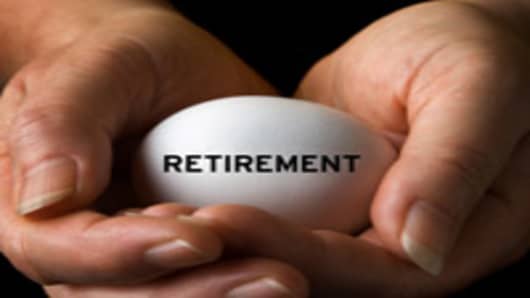No doubt last year’s financial crisis dealt a body blow to many investors, but many Boomers approaching retirement have yet to turn their reaction to last year’s events into action.
Wells Fargo just released the results of its Retirement Fitness survey and looked hard at the investment habits of pre-retirees ages 50 to 59. What did they find?
“There is a sense of denial among the pre-retirees,” said Lynne Ford, head of Wells Fargo Retail Retirement.
Even after suffering significant losses last year, many remain overly optimistic about their investment returns and the ability of their savings to fund their expenses after they stop working.
Only 23 percent of pre-retirees are saving more for their retirement than they were a year ago, the survey found. Most, some 57 percent, are saving the same amount, and 20 percent are saving less.
Perhaps even more startling is the extent to which their savings are falling short of their goals. On average, these pre-retirees expected they would need $800,000 to fund their retirement. However, most had only saved about $300,000.
Despite their inadequate savings, nearly two-thirds of the group lack any formal plans for retirement savings or spending strategies.
Of the 35 percent of those who had a written plan for retirement, only slightly more than half — about 52% percent — say they had updated it in the past year during the market downturn.
According to Ford, the results of the survey cry out for people to take more control over their retirement.
“The bottom line is you have to have a plan and pull it out and retest your assumptions,” Ford said.
Among the biggest mistakes people are making is over-estimating their investment returns and the amount of money that can safely be withdrawn each year in retirement.
In the survey, both those who were about to retire and those who already had said they expected their savings to grow by 8.7 percent each year, on average. However, the compound annual growth rate of the S&P 500 from 1958 through 2008 was only 6.6 percent.
People also under-estimate how long they will live in retirement, she said. A healthy person in their mid-sixties can easily expect to live into their eighties or even nineties. However, few people are prepared to support themselves in retirement for more than twenty years.
More from Consumer Nation:
- Study Reveals What's Really Going on in Aisle Six
- McPrank: Teens Get a Bad Rap at McDonald's
- Holiday Surveys: Putting Tinsel on a Charlie Brown Tree
Questions? Comments? Email us at consumernation@cnbc.com



